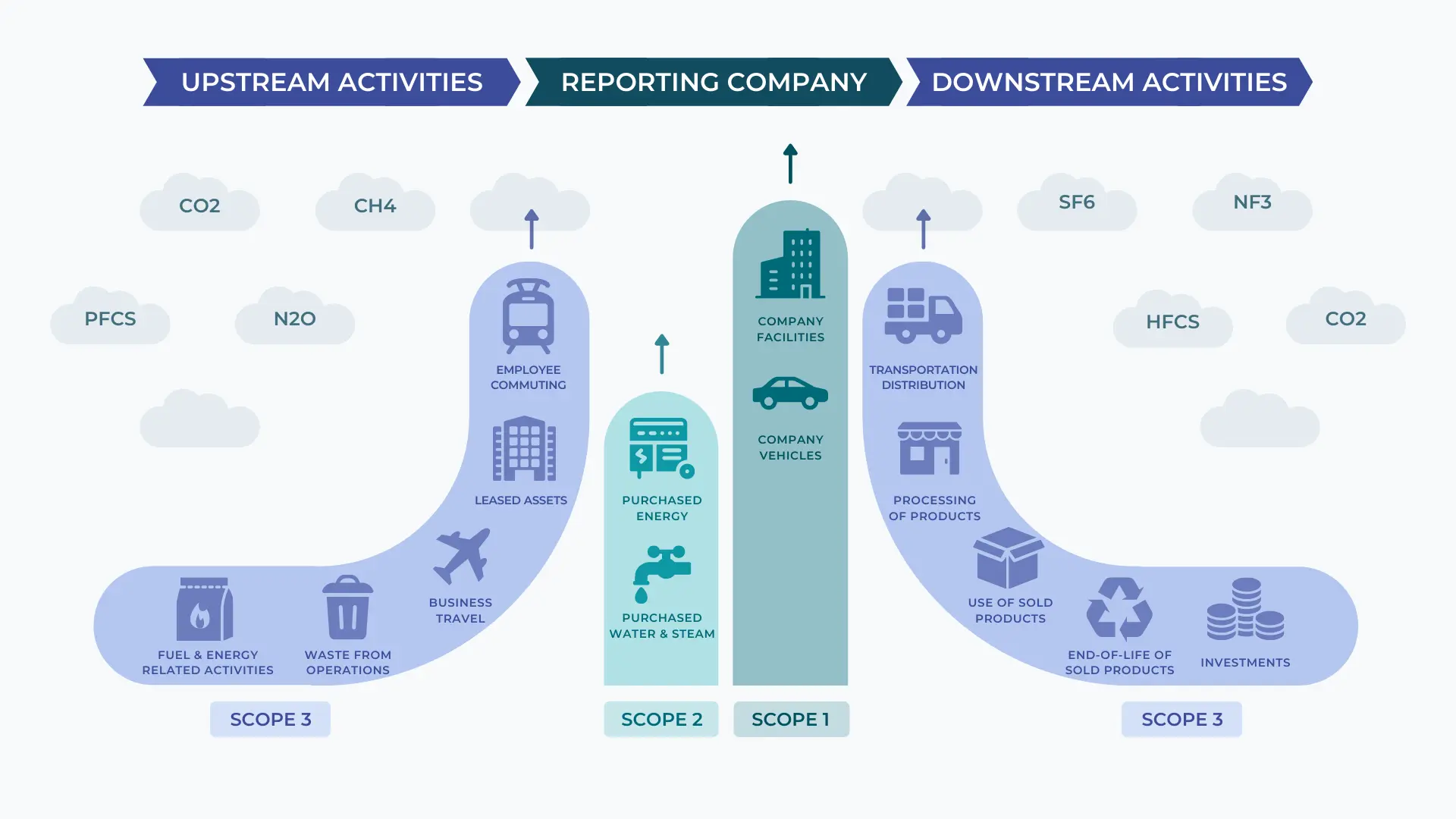
Scope 1
Direct GHG emissions
Direct emissions from sources owned or controlled by the organization, such as: combustion of stationary and mobile sources, non-combustion industrial processes, ruminant emissions, refrigerant leaks, etc.


